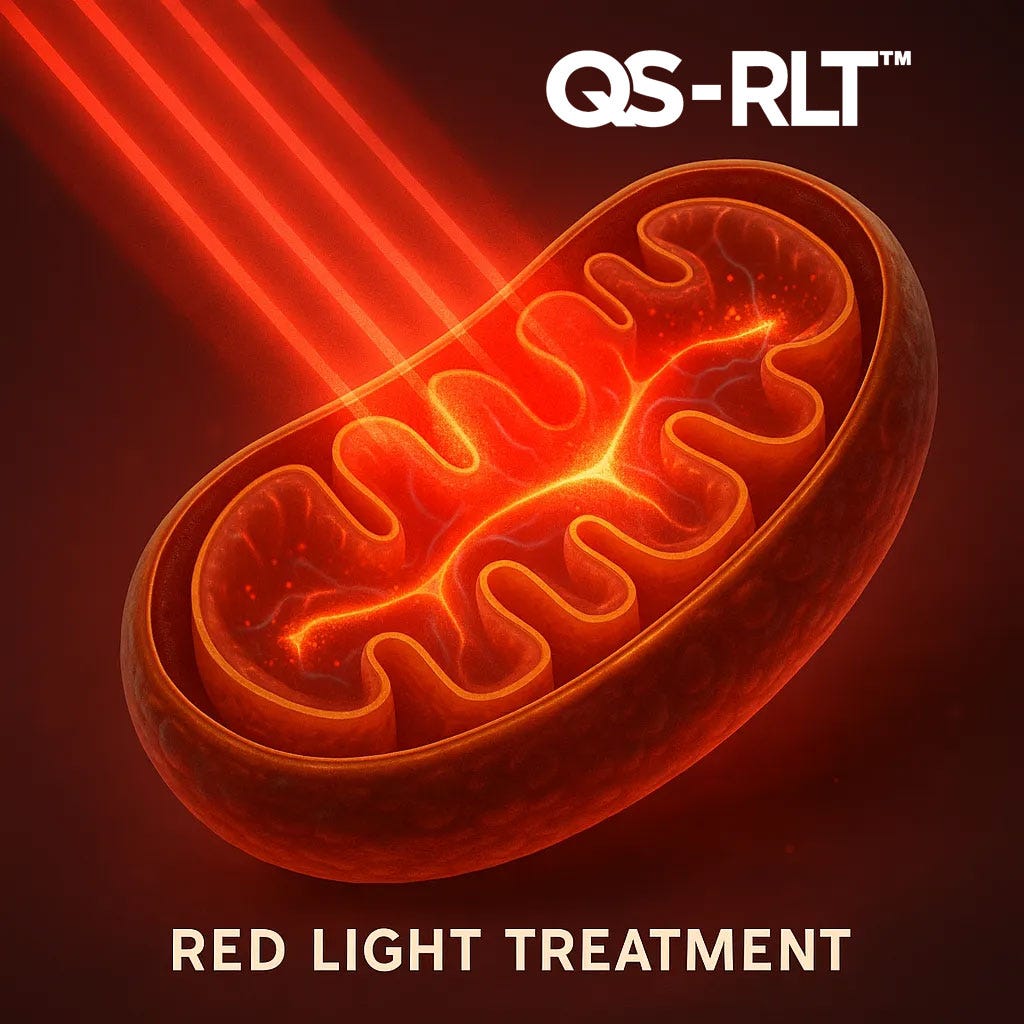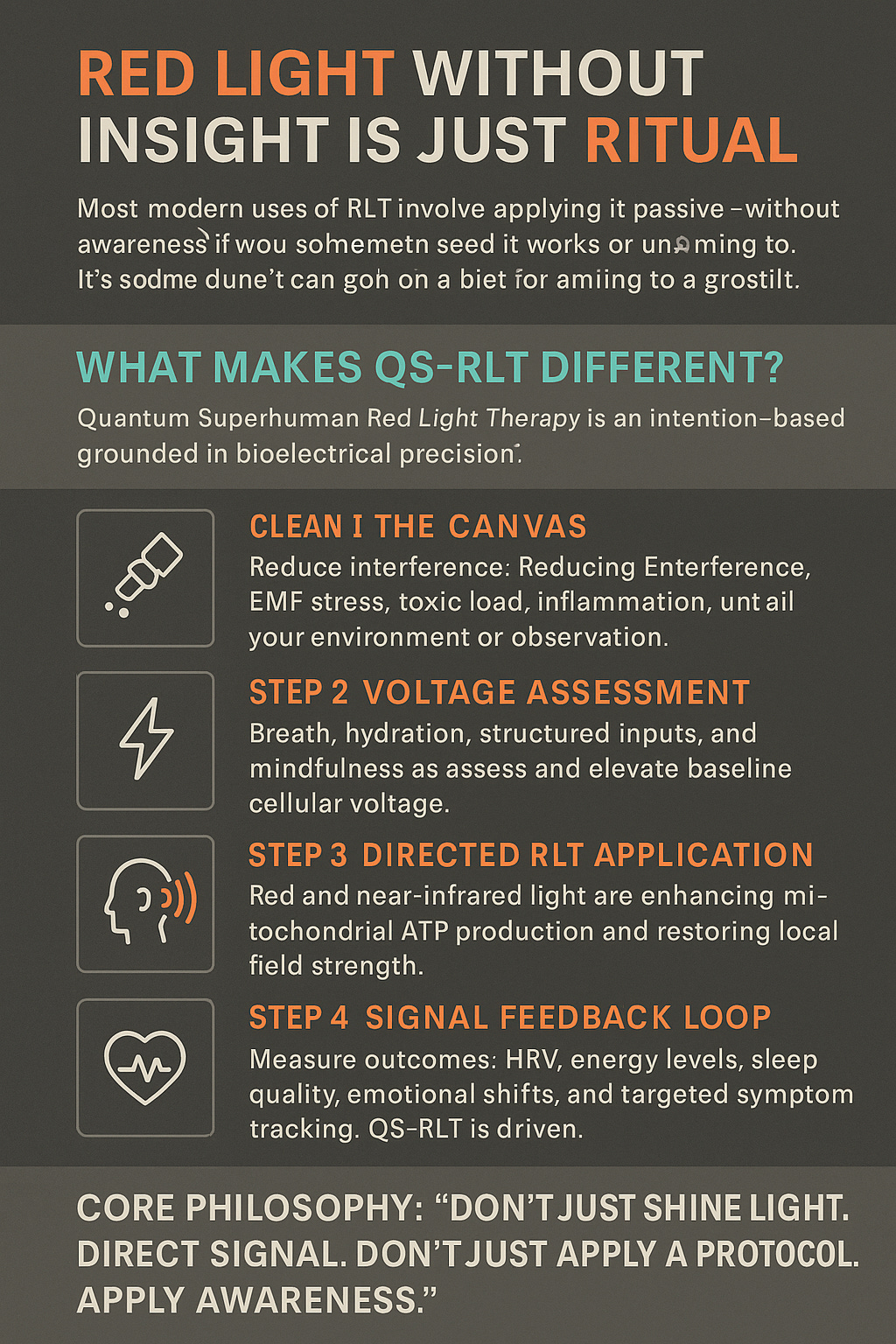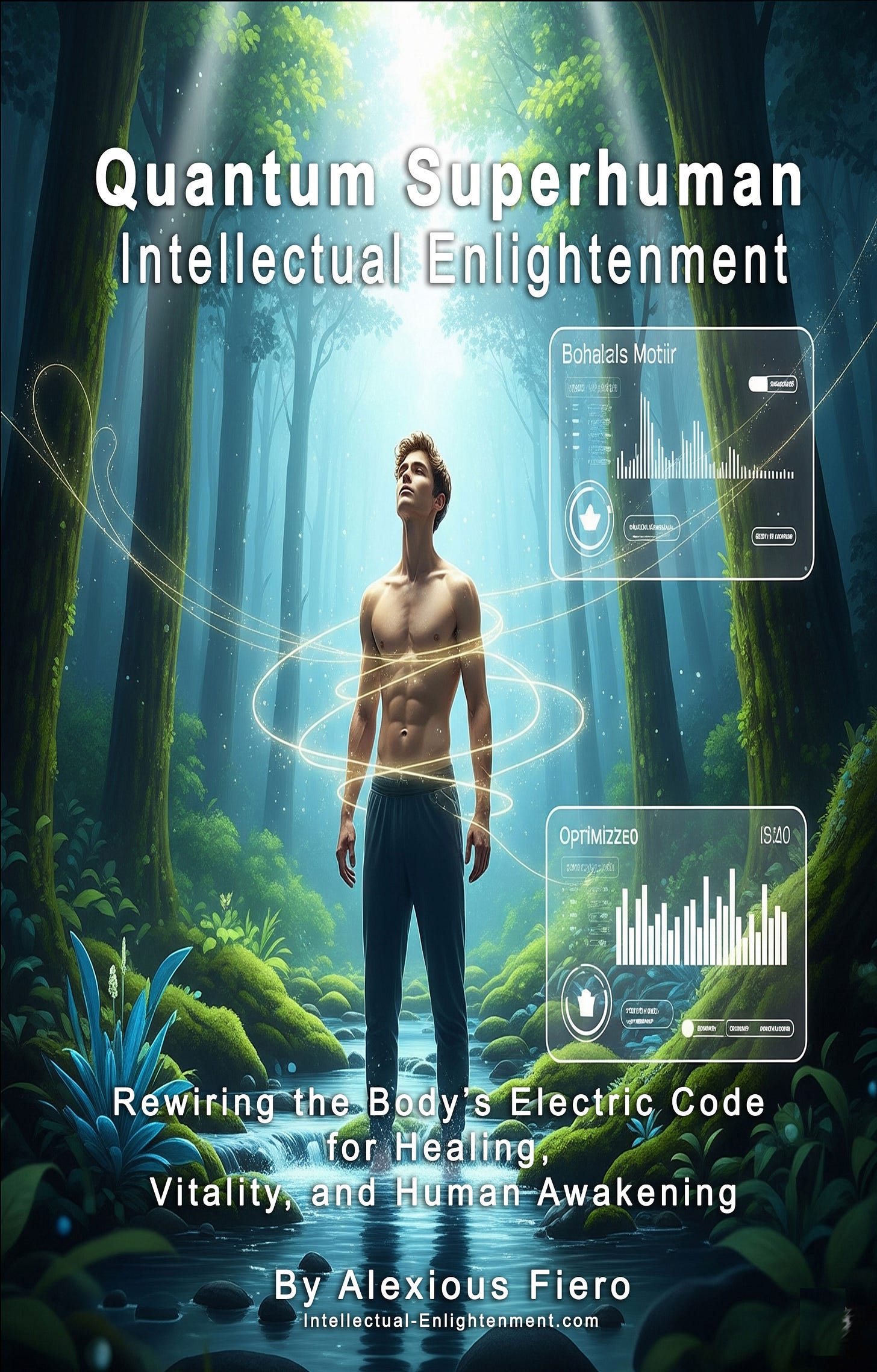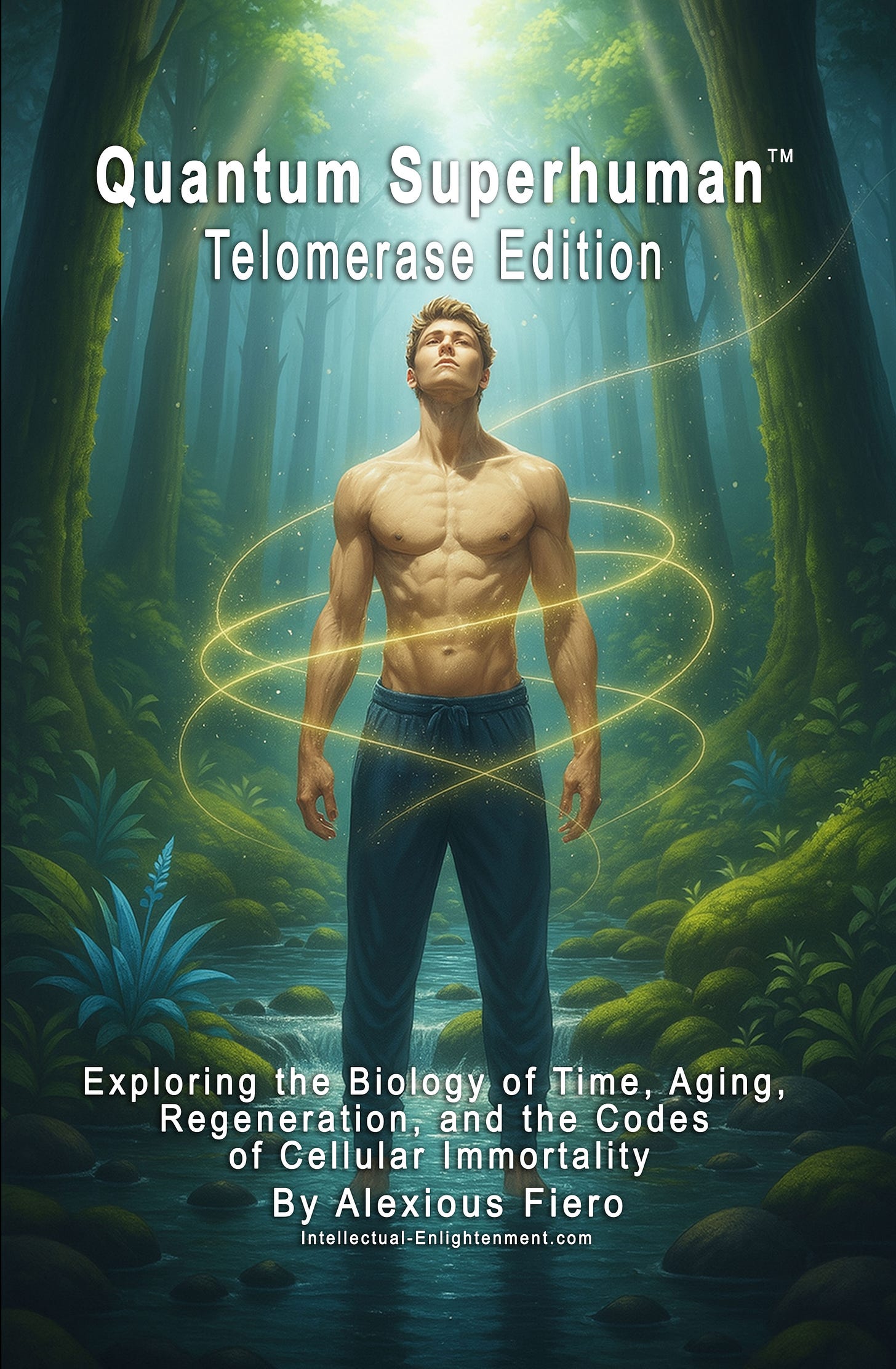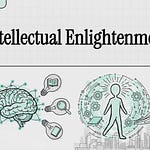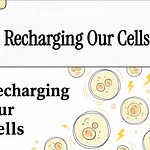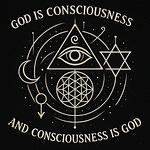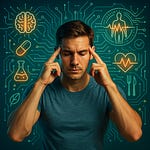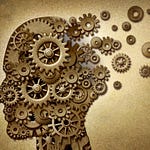Introduction: Light as Medicine
In the modern era of biohacking, regenerative wellness, and non-invasive therapies, Red Light Therapy (RLT) has emerged as one of the most studied, and misunderstood, healing tools. Rooted in photobiology and supported by evolving clinical research, RLT applies specific wavelengths of red and near-infrared light to stimulate cellular repair, reduce inflammation, and rejuvenate the body from the inside out.
But far from being just another wellness fad, red light therapy is backed by over 50 years of scientific discovery, beginning with Nobel-prize-winning work at the turn of the 20th century. Today, it's used by elite athletes, dermatologists, cancer clinics, NASA, and everyday individuals seeking to optimize their health.
1. Historical Origins: From Nobel Prizes to NASA
Late 1800s – Niels Finsen & the Light Cure
The therapeutic potential of light was first explored by Danish physician Niels Finsen, who used both red and ultraviolet light to treat tuberculosis lesions and smallpox scars. His work earned him the 1903 Nobel Prize in Medicine, marking the birth of modern phototherapy.
1960s – The Accidental Discovery
In 1967, Hungarian physician Dr. Endre Mester discovered that low-level laser light could accelerate wound healing and stimulate hair growth in mice. This phenomenon became known as photobiomodulation (PBM), the foundation of red light therapy as we know it.
1990s – NASA’s Breakthrough
NASA began using LED red light to study plant growth in space. Scientists soon found that these same wavelengths accelerated wound healing and tissue repair in astronauts. Their findings sparked new interest in the application of red and near-infrared light for human medicine.
2. How Red Light Therapy Works: The Cellular Language of Light
Wavelengths that Matter
Red light therapy uses visible red light (620–750 nm) and near-infrared light (800–1200 nm). These wavelengths penetrate the skin and are absorbed by mitochondria, the energy powerhouses of cells.
Photobiomodulation Explained
When red/NIR light photons hit the skin, they activate chromophores in the mitochondria, especially cytochrome c oxidase. This stimulation:
Increases ATP (adenosine triphosphate) production
Enhances cellular respiration and metabolism
Reduces oxidative stress and inflammation
Triggers gene transcription related to healing
In short, RLT turns on the body’s built-in repair mechanisms.
3. Clinical Applications & Health Benefits
Though still gaining mainstream clinical acceptance, red light therapy has shown promise in dozens of areas:
🔹 Skin Health & Aesthetics
Stimulates collagen and elastin production
Reduces fine lines, wrinkles, and age spots
Treats acne, rosacea, and psoriasis
Speeds wound healing and scar reduction
🔹 Pain Relief & Muscle Recovery
Decreases inflammation and joint stiffness
Speeds recovery from injury or intense workouts
Effective for fibromyalgia, arthritis, and neuropathic pain
🔹 Hair Restoration
Increases blood flow to hair follicles
Stimulates dormant follicles in androgenic alopecia (pattern baldness)
🔹 Neurological & Cognitive Health (Emerging)
May support recovery in traumatic brain injuries (TBI)
Potential in mitigating symptoms of Alzheimer’s and Parkinson’s
Enhances mood, sleep, and circadian rhythm
🔹 Mitochondrial & Cellular Regeneration
Enhances mitochondrial biogenesis
Reduces apoptosis (cell death)
Potential to support telomere length preservation, slowing biological aging
4. The Rise of At-Home Devices
Today, RLT has become accessible to the public via:
Facial wands for skin and beauty
Red light panels for full-body rejuvenation
Wearable belts and wraps for pain and inflammation
RLT pods and mats for systemic recovery
However, effectiveness varies greatly by irradiance (light power density), wavelength accuracy, device quality, and usage protocol.
5. Safety, Risks & Contraindications
Red light therapy is FDA-cleared and non-invasive with minimal side effects when used properly. However:
✅ Always follow time and distance guidelines
✅ Wear eye protection for high-powered panels
✅ Avoid use over thyroid, tumors, or during pregnancy without medical guidance
Possible risks include overheating, skin irritation, or triggering migraines in sensitive individuals.
6. Mitochondria & Telomeres: RLT at the Quantum Level
What sets RLT apart from other therapies is its interaction with mitochondria, the cellular engines responsible for ATP production. Healthy mitochondria mean:
Faster healing
More energy
Greater resistance to cellular stress
RLT also indirectly supports telomere integrity, the protective caps of chromosomes linked to aging. Preliminary studies suggest RLT may reduce telomere shortening by lowering oxidative stress and improving mitochondrial efficiency, both of which are crucial in age-related decline.
7. The Clean Canvas Principle
(Quantum Superhuman Context)
Red Light Therapy is most effective when the bioelectrical terrain is primed.
In the Quantum Superhuman framework, we begin by:
Hydrating with structured water
Raising pH balance through alkalizing foods
Clearing lymphatic and energetic blockages
Resetting breath and nervous system coherence
Only then does RLT act not as a band-aid, but as a bioelectrical activator.
8. A Glimpse Into the Future
The future of red light therapy lies in:
Personalized photobiomodulation protocols
AI-integrated wearable RLT tech
Combined modalities (e.g., PEMF + RLT)
Quantum field therapies and bio-coherence tracking
Expanded clinical uses: neurology, fertility, oncology, and more
As research expands, RLT will likely evolve from a niche wellness tool to a cornerstone of integrative medicine.
Conclusion: The Light Awakens
Red light therapy is not just skin-deep. It is a reintroduction to the language of energy within the human body. Whether you're healing an old injury, restoring cellular vitality, or simply seeking to feel more alive, RLT offers a science-backed, light-powered invitation to become your own medicine.
As the science continues to evolve, one truth remains:
You are light-responsive.
And with the right wavelength,
healing becomes resonance.


